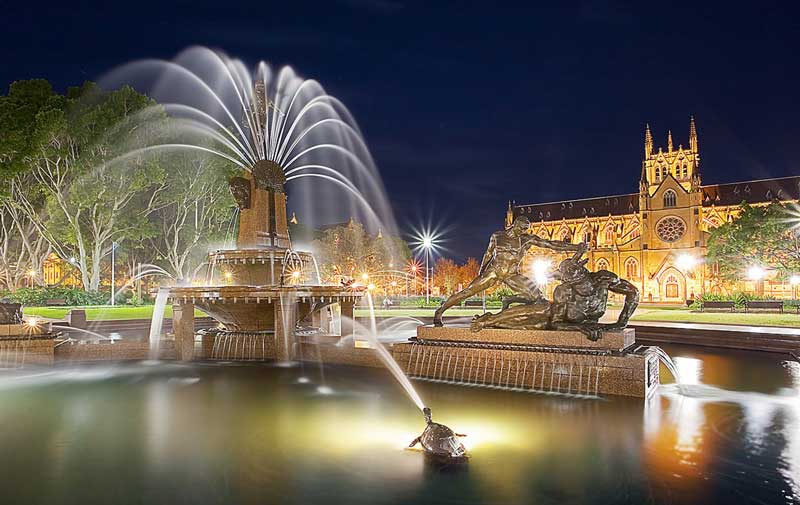
The beautiful Archibald Fountain, one of the iconic landmarks of Sydney, is situated in Hyde Park North at the centre of Birubi Circle. It was named after JF Archibald, the owner and editor of the Bulletin magazine, who allocated funds in his will for its construction and stipulated that the money allocated in his will should be invested for seven years before the commencement of the project in order to increase the amount of money available for the commission.
It was also mentioned in the will that the memorial must be designed by a French artist, both because of his love for the French culture and to commemorate the association of Australia and France in WWI.

Archibald died on 10 September 1919 and in early 1926, discussion began on a possible site for the installation of the memorial. At the same time, after a series of interviews in Paris, Francois-Leon Sicard was selected by the President of London’s Royal Academy, as the sculptor for the memorial in July 1926. Sicard, one of the foremost sculptors of his day, had never visited Sydney, but worked with the aid of photos and watercolour sketches of the proposed site.
In May 1927, he submitted his proposal for the design of the sculptural groups. The figures sculpted in bronze took several years to complete, but by early May 1930, the central figure and all the three groups for the fountain had been completed and cast in bronze in Paris. They were exhibited at the Paris Salon, where they were given the place of honour and won widespread praise. Finally, the fountain was inaugurated in Sydney on 14 March 1932, five days before the opening of the Sydney Harbour Bridge.

The hexagonal Archibald fountain is approximately 18 metres in diameter and the bronze statue of Apollo, the central raised figure, stands approximately six metres high on a central granite pedestal, dominating the other mythical deities and creatures like Diana, Pan and the Minotaur, a mythological beast with a bull’s head and a man’s body.
A large arch of fine spray, just behind Apollo, represents the rising sun and accentuates his dominant position. At Apollo’s feet, water sprays from horses’ heads into a series of three basins. Tortoises, in the large hexagonal basin and dolphins in the middle one, direct jets of water towards the centre.

As explained by the sculptor, the figure of Apollo represents beauty and light. He is the symbol of warmth, which vivifies, gives life to all Nature. Sicard regarded the Archibald Fountain as his finest work and the outstanding public sculpture has been acclaimed as a successful union of art, architecture and town planning. The sculptor intended to create a structure with a theme of peace, in the light of the atrocities of war and these two opposite ideas are clearly reflected by the presence of the three mythological characters of Diana, Pan and Theseus. While Diana brought harmony to the world and Pan watched over fields and pastures, Theseus, killed the demonic Minotaur for a greater interest.

Due to the financial constraints resulting from the depression of the early 1930s, some of the materials used in the fountain did not last long and since 1932, various alterations have been made to the basic structure. In 1946, the original pedestal was replaced by genuine granite and in 1963, architect Robert Woodward was commissioned to redesign the lighting and play of water in the fountain. Woodward restored the fan-like shape of water formed by jets rising behind the figure of Apollo, as originally intended by Sicard to represent the rising sun.